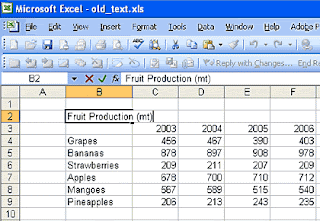Microsoft Excel (full name Microsoft Office Excel) is a spreadsheet application written and distributed by Microsoft for Microsoft Windows and Mac Os X. It features calculation, graphing tools and a macro programming language called VBA (Visual Basic for Application). It has been a very widely applied spreadsheet for these platforms, especially since version 5 in 1993. Excel forms part of Microsoft Office. The current versions are Microsoft Office Excel 2010 for Windows and 2008 for Mac.
Versions of Microsoft Excel:
| Windows | |
| Macintosh |
|
| OS/2 |
|
Microsoft Excel has the basic features of all spreadsheets using a grid of cells arranged in numbered rows and letter-named columns to organize data manipulations like arithmetic operations. It has a battery of supplied functions to answer statistical, engineering and financial needs. In addition, it can display data as line graphs, histograms and charts, and with a very limited three-dimensional graphical display. It allows sectioning of data to view its dependencies on various factors from different perspectives. And it has a programming aspect, Visual Basic for Applications, allowing the user to employ a wide variety of numerical methods, for example, for solving differential equations of mathematical physics and then reporting the results back to the spreadsheet.
It also has a variety of interactive features allowing user interfaces that can completely hide the spreadsheet from the user, so the spreadsheet presents itself as a so-called application, or decision support system (DSS), via a custom-designed user interface, for example, a stock analyzer or in general, as a design tool that asks the user questions and provides answers and reports. In a more elaborate realization, an Excel application can automatically poll external databases and measuring instruments using an update schedule,analyze the results, make a Word report or Power Point slide show, and e-mail these presentations on a regular basis to a list of participants.
to download latest version of Microsoft Excel 2010,click here.


No comments:
Post a Comment